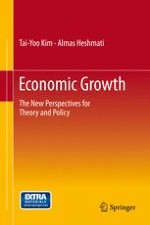2014 | OriginalPaper | Buchkapitel
3. Accelerating Economic Growth in Industrial Societies: The Process of Expansive Reproduction
verfasst von : Tai-Yoo Kim, Seunghyun Kim, Ph.D. in Engineering, Jongsu Lee
Erschienen in: Economic Growth
Verlag: Springer Berlin Heidelberg
Aktivieren Sie unsere intelligente Suche, um passende Fachinhalte oder Patente zu finden.
Wählen Sie Textabschnitte aus um mit Künstlicher Intelligenz passenden Patente zu finden. powered by
Markieren Sie Textabschnitte, um KI-gestützt weitere passende Inhalte zu finden. powered by
